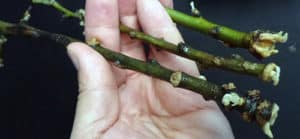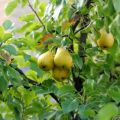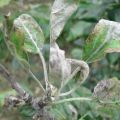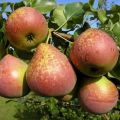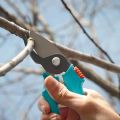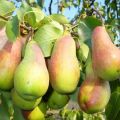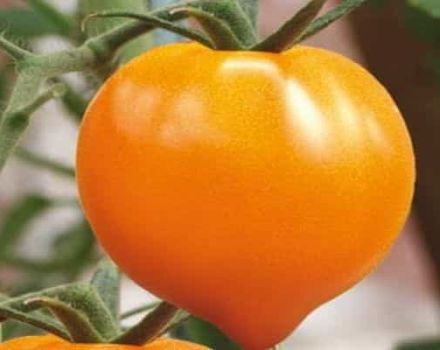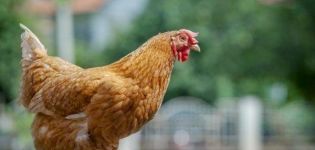Description of the best varieties of columnar pear, planting, cultivation and care
Until recently, the largest, juicy fragrant pears grew only in warm regions. Thanks to breeding work on improving varieties, residents of the northern regions also have the opportunity to grow pears in their garden plots. Fruits in dense crowns of tall varieties do not have time to ripen in a temperate continental climate due to a lack of sunny days. Things would be somewhat different with columnar pears, whose fruits are open to the sun's rays.
Content
- 1 Description and history of selection of columnar pears
- 2 The best varieties
- 3 The best varieties of pears for the Moscow region
- 4 Pros and cons
- 5 Common breeding methods
- 6 Planting conditions for bonsai
- 6.1 Selection of seedlings and varieties
- 6.2 Choosing a landing site
- 6.3 Soil selection and preparation
- 6.4 Distance between trees
- 6.5 Features of the root system
- 6.6 Planting technology of columnar pear
- 6.7 Correct care
- 6.8 How to trim the pear correctly?
- 6.9 Loosening and mulching
- 6.10 Let's move on to fertilizers
- 6.11 Preparing for winter
- 6.12 Disease and pest control
- 7 Features of cultivation in different regions of Russia
- 8 Harvesting and storage
Description and history of selection of columnar pears
For the first time, the pear, which is mistakenly called columnar, was bred by English breeders a little over 30 years ago. Varieties of dwarf plants with a rounded crown turned out to be not winter-hardy. Contrary to the expectations of scientists, plants froze even in the Krasnodar Territory, as Mikhail Vitalievich Kachalkin, Ph.D. in Biological Sciences, the author of 13 varieties of columnar apple trees, who has been working for many years on breeding a pear tree in a nursery, told about this in an interview.
On the territory of Russia, 3 scientific institutions are engaged in this issue. According to the scientist, at the moment there is not a single variety of columnar pears in the world; sellers give out a dwarf plant for it. Unscrupulous salespeople use this trick because the one-year-old escape really looks like a column.
On a two-year-old, there are more branches, the fruits ripen on the ringlets, and not on the trunk, as would happen on a columnar tree.
The advantage of undersized (dwarf fruit trees) is that with proper pruning of branches, forming a crown like a column, the fruits of winter-hardy varieties suitable for growing in temperate climatic zones receive their portion of heat and light in full... Among the varieties that can be conventionally called columnar, several varieties of low-growing pears that are unpretentious in care for growing in a temperate and harsh northern climate have been singled out for cultivation in terms of resistance to diseases and frost.

The best varieties
Low-growing trees, densely covered with large pears during the fruiting period, are a real decoration of the personal plot.When purchasing pear seedlings from nurseries of research institutes, universities, most often it will not be possible to see a colorful label, instead of it, a tag with marking will flaunt on the seedling, for example, g (pear) 322.
G-322
This variety can be purchased from retail distributors under different names, as the selection is not yet complete and no names have been assigned to the intermediate columnar variety experiment. Despite this, the G-322 variety is recognized as one of the best for cultivation in central Russia - Moscow region, northwest of the Leningrad region and the Baltic states.
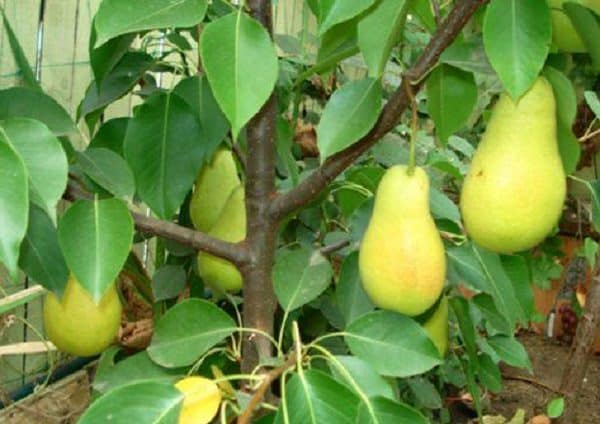
The name can be deciphered: "G" - pear. The first digit of the marking contains the main characteristics of the variety, if the first is the number Z, then you have a seedling in front of you:
- early autumn variety;
- with frost resistance up to -25 ° C;
- harvesting dates in September-October;
- large (≈ 400 g) yellow fruits;
- the flesh of his pears is sweet, tender.
The numbers that follow this data are simply the number of the experiment to improve the qualities of the main variety. A beautiful name can replace only the last digits, but not the main characteristics of the variety.
Dwarf pear Dalikor
In addition to the name Dalikor, the label will contain generalized characteristics corresponding to the G-4 varieties. They will not give a complete understanding of what the gardener will get. The variety of dwarf (columnar) pear Dalikor meets the following parameters:
- the maximum height of the trunk of an adult tree is 2 m;
- by trimming, a column is formed with flattened upper branches;
- the life of the tree is 10 years;
- fruit weight from 300 to 500 g;
- abundant fruiting;
- the fruit pulp is homogeneous, tender, without granules, not tart;
- the plant is resistant to diseases and damage by insect pests.
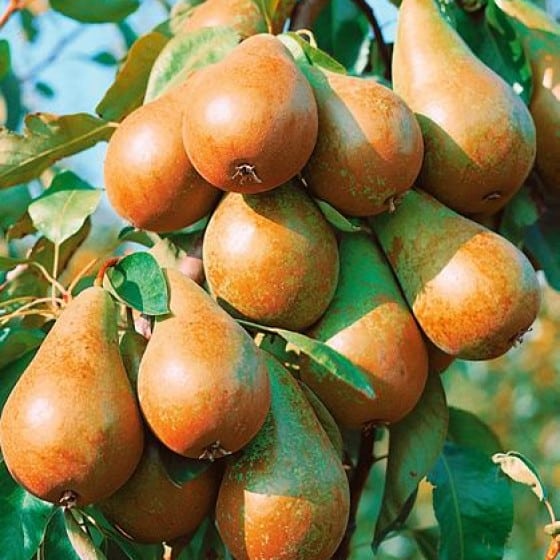
Dalikor is a variety of autumn ripening terms, with high keeping rates. Wide, juicy fruits with a taste of butter cream, if stored properly, will become a decoration of the New Year's table. It is extremely rare to keep them longer.
Doyenne do Comis
In terms of taste, the Doyenne do Comis variety is recognized as the best among mid-season varieties for temperate latitudes. It is difficult to achieve similarities with columnar plants from this dwarf tree, but this is not the only negative. The main unpleasant moments in growing are:
- the need for the proximity of pollinating varieties, despite the fact that the variety itself is also self-fertile;
- the need to normalize the harvest by removing excess ovaries during the fertile season;
- the variety is characterized by spontaneous discharge of some of the fruits in June.
All these shortcomings are compensated by the taste of juicy, thin-skinned, large fruits.For your information: Variety number Pýrus communis Doyen do Komis is 590.

The best varieties of pears for the Moscow region
Despite the small size of the plant itself, dwarf pears give decent yields. Some of the varieties common in the Moscow region can be stored at a positive (stable) temperature for 5-6 months, others are distinguished by increased immunity to diseases. According to various criteria, the best varieties for the Moscow region are:
- Dalikor - 35-40 kg, 70-80 fruits per tree.
- The decor has a high immunity to sporia and moniziosis, is distinguished by high winter hardiness, the variety is self-fertile, does not require cross-pollination and special soil selection for planting.
- Carmen is a great variety for pear lovers with a flavor similar to Williams. Advantage - resistance to scab, high taste, adaptability in any soil. Disadvantages - low frost resistance and yield.
- The favorite of Academician Yakovlev is the yield up to 50 kg, fruiting later (4-5th season), the weight of the fruits is 200-400 g, the taste is similar to quince. To increase the yield of a self-fertile variety, pollinators are needed - the Daughter of Blankov and Esperen.
- Honey - up to 80 kg of a crop consisting of yellow fruits weighing 400-500 g, but it is not possible to keep the fruits fresh for more than 2 months.The variety is unpretentious in care, it is not afraid of either drought or frost. There are no special requirements for the soil either. The tree begins to bear fruit in the 3rd season.
- Autumn's Dream - a variety with fruits, the weight of which varies from 200 to 400 g. Fruiting in the 5th year after planting in a permanent place. Well suited for making preserves, jams, compotes. Despite the tenderness of the pulp, the juice content is moderate.
- Sapphire is highly resistant to sudden changes in temperature, which does not affect the taste and yield of the variety, and high immunity to diseases. Fruiting in the 3rd year. The peculiarity lies in the fact that it is recommended to harvest the fruits from the tree at the stage of technical maturity, while they can be eaten in 2-3 weeks. The maximum shelf life is until the first decade of December.
- Severyanka is a variety that begins to bear fruit in the Moscow region in the 2nd year after planting. A slightly strengthened tree gives stable yields of up to 60 kg per plant. Harvesting occurs at the beginning of September, ripe fruits fall off, the taste of Severyanka is cloyingly sweet.
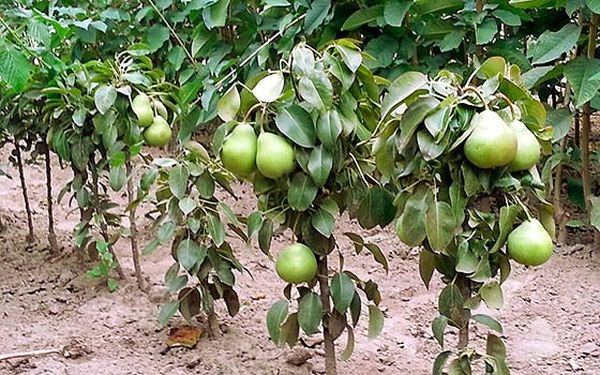
Each columnar pear variety has its own advantages and disadvantages, which must be taken into account when choosing seedlings. The varieties grown in the Moscow region are suitable for the regions of central Russia.
For the Urals, winter-hardy pears of early ripening with a minimum growing season, which is dictated by hot, but very short summer, should be chosen as covering crops.
One of the original varieties of frost-resistant dwarf pear trees, which give the fastest results and richest yields, is Pavlovskaya. She is unpretentious in care. The first large, juicy, yellow (with a bright taste and aroma) fruits will delight the gardener the next season after planting. Minimum care, resistance to disease, large fruits with an original taste are the main advantages of the Pavlovskaya variety.
Pros and cons
The advantages of dwarf pear varieties are:
- small footage of the area for cultivation;
- unpretentiousness of seedlings to acidity and soil density;
- the rapid onset of fruiting dates;
- large yields in relation to the area occupied by the plant;
- several possible breeding methods;
- ease of preserving trees in winter, which gives a low plant height.
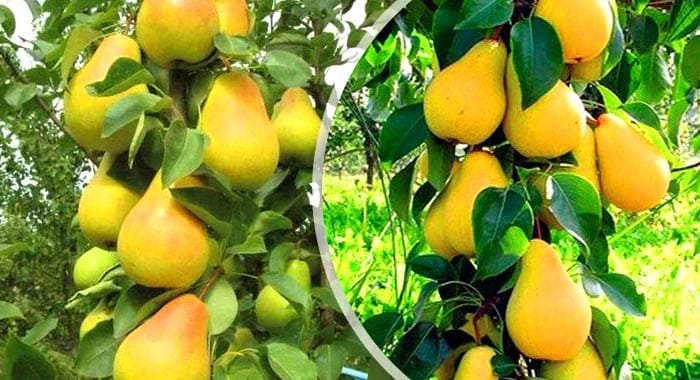
The main disadvantage of dwarf trees in front of true columnar trees is the obligatory annual formation of the crown, which prevents its branching, thickening, which would lead to a lack of sunlight for the fruits.
Common breeding methods
As a rule, the very first seedling of a certain variety appears on the plot from the nursery. The advantage of a bonsai over a columnar tree is that, in addition to grafting, it can be propagated by cuttings. Due to the complexity of the process for independent long-term germination, amateur gardeners practically do not use the method of seed reproduction, and not all varieties of columnar pears can be grown in this way.
Vaccination
Irga and quince are the best rootstocks for grafting a columnar pear. For this operation, it is better to choose the time in late April - early May. Cloudy weather is the most favorable for this type of work.
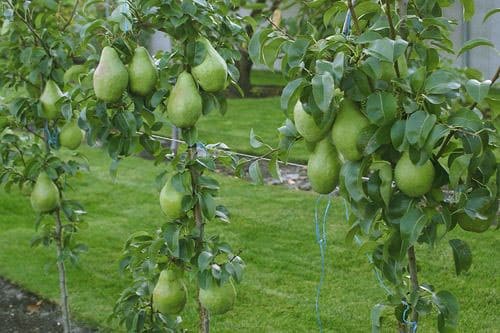
Attention! Strong, 70-80 cm shoots are harvested in winter.
There are three types of vaccinations:
- for the bark;
- in the side cut;
- into cleavage.
For work, you will need a disinfected sharp knife or pruning shears, garden pitch, garters:
- Stock preparation: all branches are shortened to 40 cm or removed.
- The cut on the shoot is made at an acute angle so that it has the maximum area of contact with the stock wood.
- A deep cut is made in the rootstock wood.
- The cut of the high-quality shoot is combined with the open wound of the rootstock, fixed with a bandage, electrical tape, wire over cotton fabric.
- The vaccination site is treated with garden varnish from all sides.

The approximate time for the rootstock to heal and unite with the graft stem is 3-4 weeks.
By cuttings
When used for propagation of garden plantings, special attention should be paid to the selection of planting material - on each cuttings 25-30 cm long there should be 5 fresh leaves and 2 internodes. In order for the shoots to give roots faster, they must be placed in water with "Kornevin" dissolved in it - a composition that accelerates root growth.
After planting, the 3 largest leaves are pinched on the cuttings, the plant is covered with a jar for rooting.
Planting conditions for bonsai
The health of the tree, its yield, immunity to certain strains of diseases are programmed not only during breeding, but in the process of planting, choosing the optimal place, choosing a favorable neighborhood with other garden and vegetable crops, and preparing the soil.
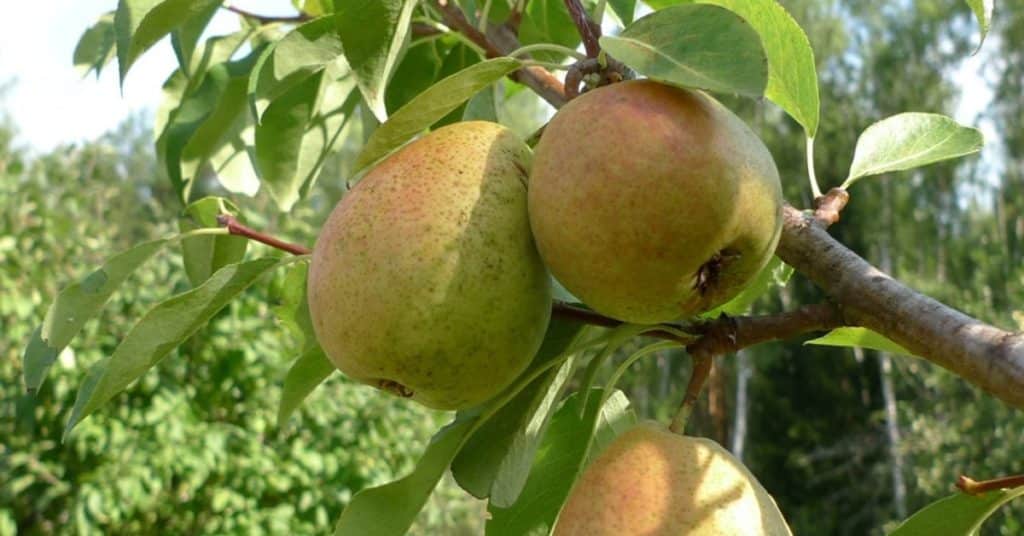
Selection of seedlings and varieties
When buying a seedling, you need to pay attention to the following factors that indicate the health of the plant:
- Smooth bark without bumps and damage.
- The root system should not contain signs of decay, dry, dying areas, damage to the rhizome - cuts.
- A young (annual seedling) in most varieties has a greenish tint of the bark - this is the best planting material in terms of survival rate.
Choosing a young healthy seedling is 50% of success. The main thing is that its adaptability to new growing conditions is the highest, and this is possible when buying a plant bred specifically for specific climatic conditions. Labeling will help to understand this:
- Г-1 are winter varieties (late ripening). They are suitable for warm to temperate latitudes.
- Г-2 are frost-resistant varieties bred for cultivation in Siberia and the Urals.
- G-3 - early autumn varieties with a good coefficient of frost resistance, suitable for planting in areas with hot long summers and severe winters - temperate continental climate.
- G-4 differs from G-3 varieties in taste.
- G-5 - late summer varieties adapted to the conditions of the Urals.
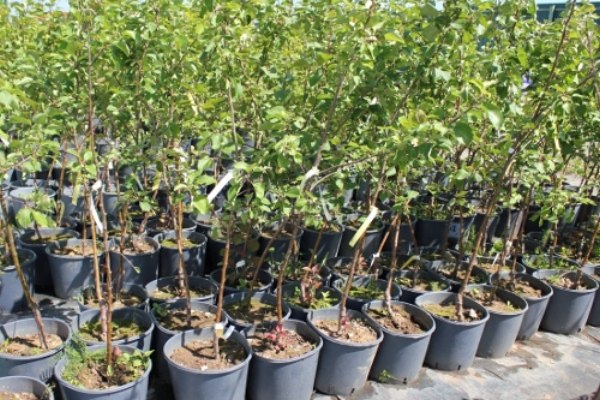
Even if the labeling of plants is not as poetic as the names of the variety, it is more informative. The presence of markings on the seedling label allows the gardener to understand the characteristics of the variety without a register of garden trees, especially since not all varieties are included there.
Choosing a landing site
Large space for columnar pears is not needed, 60 cm must be allocated for one plant2 personal space, which should not be shaded by the crowns of higher trees, buildings, but it should not be an area open to all the winds.
Soil selection and preparation
A pear is an unpretentious plant in terms of soil selection. Like any fruit plant, it needs nutrients, they will be provided by organic fertilizers. When preparing a planting hole, you should not neglect the enrichment of the soil by introducing humus into it.
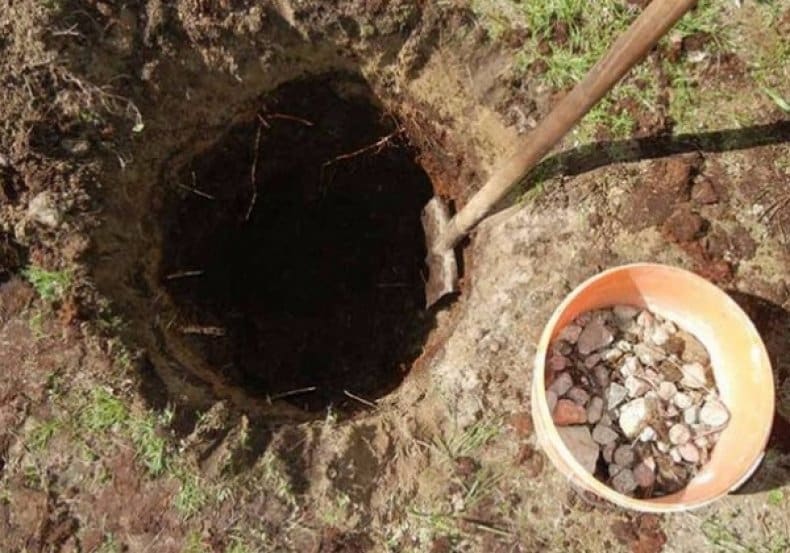
Distance between trees
The scheme for planting columnar pears looks like this:
- Hole dimensions: depth - 80 cm, width - 60 cm.
- The distance between the holes in a row is 50 cm.
- The distance between the rows is 100-150 cm.
If these parameters of planting are observed, there will be enough light for low-growing plants, and full air circulation will be ensured.
Features of the root system
Considering that the roots of a dwarf plant do not go deep into the ground, but are located almost parallel to the top layer of the soil, weak sandy soils are strengthened by sphagnum. This moss multiplies quickly and strengthens the soil. When planting in sandy loam and loamy soils, such measures are not required.

Planting technology of columnar pear
The planting pattern above is used when setting up an orchard with plants of approximately the same height. If it is necessary to plant one seedling among giant trees, one should take into account not the distance from the trunk of a nearby growing plant, but the dimensions of its crown. A low-growing pear will be uncomfortable in its shade, which will affect the health and productivity of a young tree.
Correct care
The yield and health of the tree depends on the correct care. That's right, it doesn't mean abundantly! All stages of care must be carried out in a timely manner and without much fanaticism. Surplus fertilizer promotes the growth of the trunk and leaf mass, but the yield may be zero. Neglecting preventive spraying with insecticides will result in a serious disease even for a plant with high immunity. Pruning not done in time will turn the columnar tree into a simple dwarf tree with a dense rounded crown.
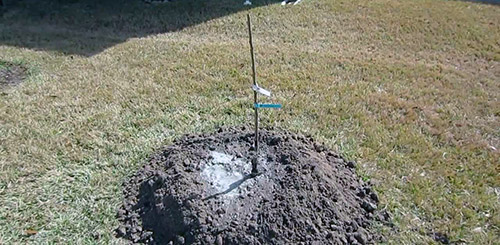
How to trim the pear correctly?
Pruning pears in the fall is a mandatory step for crown formation. In order for a dwarf pear to have the maximum advantages of a columnar plant, it is necessary to cut the shoots so that only 2 eyes remain on them from autumn.
In the spring and summer, only shoots affected by diseases or frost are removed, since the annual growth of branch mass is insignificant.
Loosening and mulching
These two stages are directly related to each other. Loosening is carried out immediately after harvesting mulch from the soil in spring and after harvesting, before preparing the plants for the winter period. It is necessary to loosen it so that air and water in sufficient quantities get to the roots of the plant, and it is necessary to mulch to protect the root system: from frost in winter, from pests, excessive drying or excessive moisture in summer.
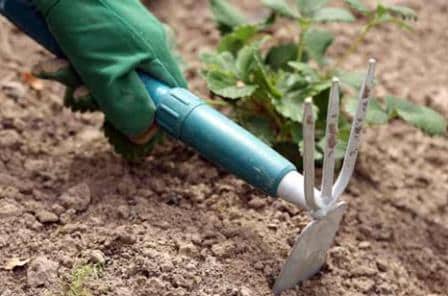
Let's move on to fertilizers
Nitrogen is a fundamental element for the development of a plant, painlessly overcoming all stages of the growing season, up to the maximum possible weight gain for the variety. Nitrogen-containing fertilizers are applied before flowering and during the formation of fruit ovaries. According to the need for the introduction of potash, phosphate fertilizers and other trace elements, it is worth focusing on the state of the pear foliage.
Preparing for winter
The beginning of the preparatory stage begins immediately after the completion of the harvest, the mulching layer is removed from the ground along with fallen leaves, fruits, insect larvae, pathogenic microflora. To protect against insects that have chosen the bark of the tree as a refuge for wintering, the trunk must be covered with a layer of lime whitewash.

Pear varieties that are not the most frost-resistant should be wrapped in plastic and burlap. On the loosened soil above the root system, a 10 cm layer of fresh (warming) mulch is laid - peat mixed with sawdust or straw. With the predicted severe winter, you can additionally cover the land with spruce branches.
Disease and pest control
It is easier to prevent a disease than to cure it. The main preventive action is early spring spraying of fruit trees with insecticides, which is a good measure to combat aphids, pear coppers and mites. In the fight against many diseases of pears, tobacco and lemon balm planted nearby will help.
Features of cultivation in different regions of Russia
The main features when growing columnar pear trees in different climatic conditions are the timing of preventive measures of protection, the thickness of the mulching layer and the covering material of the plant itself.

If spraying pears for weather conditions in the Moscow region is recommended to be carried out in the last decade of April, then in the Krasnodar Territory this stage of care will take place at the beginning of the month.For adult plants of frost-resistant varieties of pears in the Moscow region, you can not use wrapping the tree in sackcloth, then for Siberia and the Urals, all varieties of dwarf pears are considered covering, requiring mandatory insulation.
Harvesting and storage
The crop harvested at the stage of technical maturity can be kept fresh, and the more mature fruits can be used for processing - making marmalades, jellies, stewed fruit, candied fruits and other sweets.
